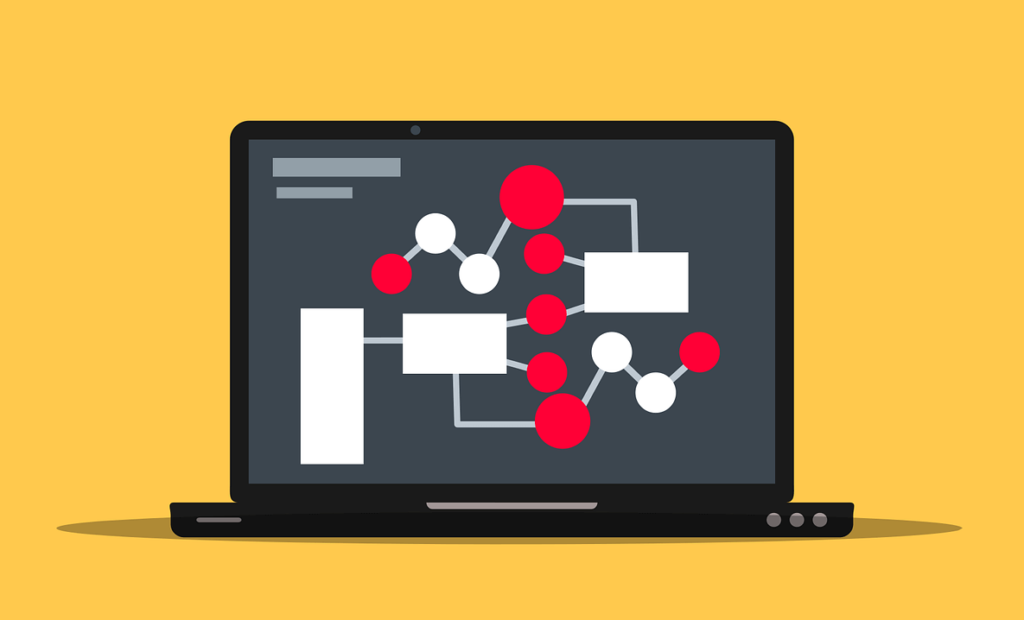Algorithms are the foundation of computer programming, helping developers tackle complex problems with efficiency and precision. Whether you’re interested in front-end development, back-end development, or full-stack development, knowing essential algorithms can improve your problem-solving abilities and make your code more effective. In this article, we’ll explore the top seven algorithms that every programmer should know, along with tips for learning and practicing them.

1. Sorting Algorithms
Sorting algorithms are fundamental in software engineering and are often among the first types of algorithms covered in programming lessons. They arrange data in a particular order, making it easier to process. There are several types of sorting algorithms, each with unique use cases:
- Bubble Sort: A simple algorithm where each pair of adjacent elements is compared, and they are swapped if they’re in the wrong order.
- Merge Sort: A divide-and-conquer algorithm that splits the array into halves, sorts them, and then merges them back together.
- Quick Sort: Another divide-and-conquer algorithm that picks a pivot element and partitions the array around it.
Sorting algorithms improve data organization and are essential in optimizing search processes, making them highly valuable in coding education.
2. Search Algorithms
Search algorithms are used to retrieve data from a data structure. There are several search algorithms, but two of the most important are:
- Linear Search: A straightforward method that goes through each element in a list until it finds the target item.
- Binary Search: A faster search technique that requires a sorted array, dividing the search interval in half each time until the target is found.
Mastering these algorithms is crucial for developers working with large datasets, as efficient search capabilities can drastically improve application performance.
3. Hashing
Hashing is a technique used to store and retrieve data in constant time. It involves using a hash function to convert data (such as a string) into a unique code or “hash,” which represents that data in a hash table. Hashing is widely used in applications where quick data retrieval is essential, like databases, caches, and lookup tables.
By implementing hashing algorithms, you’ll gain insight into the back-end processes of many systems. It’s particularly helpful for understanding concepts in back-end development and database management, where efficient data handling is vital.
4. Dynamic Programming
Dynamic programming (DP) is a method for solving complex problems by breaking them down into simpler subproblems. DP stores the results of previously solved subproblems, making it faster to solve similar problems. Common examples include:
- Fibonacci Sequence: Calculating the nth Fibonacci number by storing previous results, saving time over a simple recursive approach.
- Knapsack Problem: A classic DP problem where the goal is to maximize the value in a knapsack without exceeding its weight capacity.
Dynamic programming is a powerful tool, especially useful for solving problems involving optimization, and is often covered in advanced algorithms courses. Many coding challenges involve DP problems, making it an essential area for programmers to study.
5. Graph Algorithms
Graph algorithms operate on data structures known as graphs, which consist of nodes (vertices) connected by edges. They’re widely used in applications such as social networks, mapping, and recommendation engines. Important graph algorithms include:
- Depth-First Search (DFS): An algorithm that explores as far down a branch as possible before backtracking, useful for tasks like maze solving.
- Breadth-First Search (BFS): An algorithm that explores nodes in layers, visiting all nodes at a particular depth level before moving deeper. It’s ideal for finding the shortest path in an unweighted graph.
Graph algorithms are valuable in both front-end and back-end development, as they’re often used to optimize connectivity and routing in applications. Understanding graph traversal is beneficial for developers working with complex data relationships.
6. Recursion
Recursion is an approach where a function calls itself to solve smaller instances of the same problem. Recursion is foundational in many algorithms and is particularly useful in scenarios where a problem can be divided into similar subproblems, such as sorting, searching, and tree traversal. Examples include:
- Factorial Calculation: A common example of a recursive function, where the factorial of n (n!) is calculated by multiplying n by the factorial of n-1.
- Tower of Hanoi: A classic recursion problem that involves moving disks between pegs according to specific rules.
Recursion is a valuable skill for any developer and is often tested in technical interviews. Practicing recursive solutions through coding exercises is essential for mastering this technique.
7. Greedy Algorithms
Greedy algorithms are used to find optimal solutions by making the best possible choice at each step without considering future consequences. While they may not always provide the best global solution, they are efficient for certain problems. Common greedy algorithms include:
- Dijkstra’s Algorithm: Used to find the shortest path between nodes in a graph.
- Activity Selection Problem: Maximizes the number of non-overlapping activities a person can attend.
Greedy algorithms are often faster and easier to implement than other algorithms, making them ideal for time-sensitive applications. They are widely used in networking, scheduling, and optimization tasks, making them a valuable addition to your software engineering toolkit.
Tips for Mastering These Algorithms
- Start with the Basics: Begin with simpler algorithms like sorting and searching before moving on to more complex topics like dynamic programming and graph traversal.
- Practice with Coding Challenges: Platforms like LeetCode, CodeSignal, and Codewars offer coding challenges specifically tailored to these algorithms, allowing you to apply what you’ve learned in real-world scenarios.
- Take an Algorithms Course: Many online platforms, including Coursera and Udacity, offer algorithms courses that guide you through each concept step-by-step.
- Work on Programming Projects: Building small projects that incorporate these algorithms, such as a simple calculator (for recursion) or a pathfinding app (for graph algorithms), can solidify your understanding.
Why These Algorithms Matter
Knowing these algorithms is more than just an academic exercise; they’re essential in real-world programming. From optimizing search engines to improving the efficiency of e-commerce sites, algorithms play a crucial role in applications across industries. They are especially useful in high-performance applications, where fast processing and optimal solutions are critical.
In addition to technical knowledge, familiarity with these algorithms shows potential employers that you have a solid foundation in coding education and problem-solving, skills that are in high demand in software engineering roles. Whether you’re preparing for technical interviews or working on complex programming projects, these algorithms provide the building blocks for success.

Take Your Coding Skills to the Next Level
Mastering these essential algorithms is a significant step forward in your journey as a software engineer. From sorting algorithms that help organize data to dynamic programming techniques that optimize performance, these seven algorithms cover a range of skills that are crucial for both beginners and advanced developers.
Make a plan to learn each algorithm, starting with simpler ones and gradually working your way up. Use online coding tutorials and coding workshops to guide your learning and take on coding challenges to test your skills. With dedication and practice, you’ll build a strong foundation that not only enhances your coding proficiency but also makes you a more effective and competitive software engineer.




